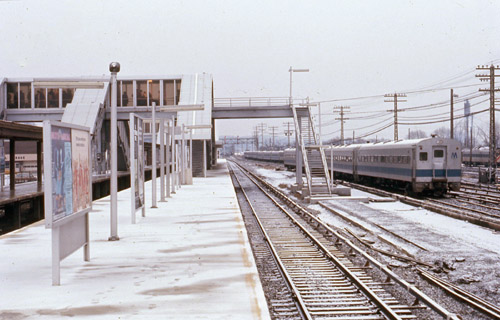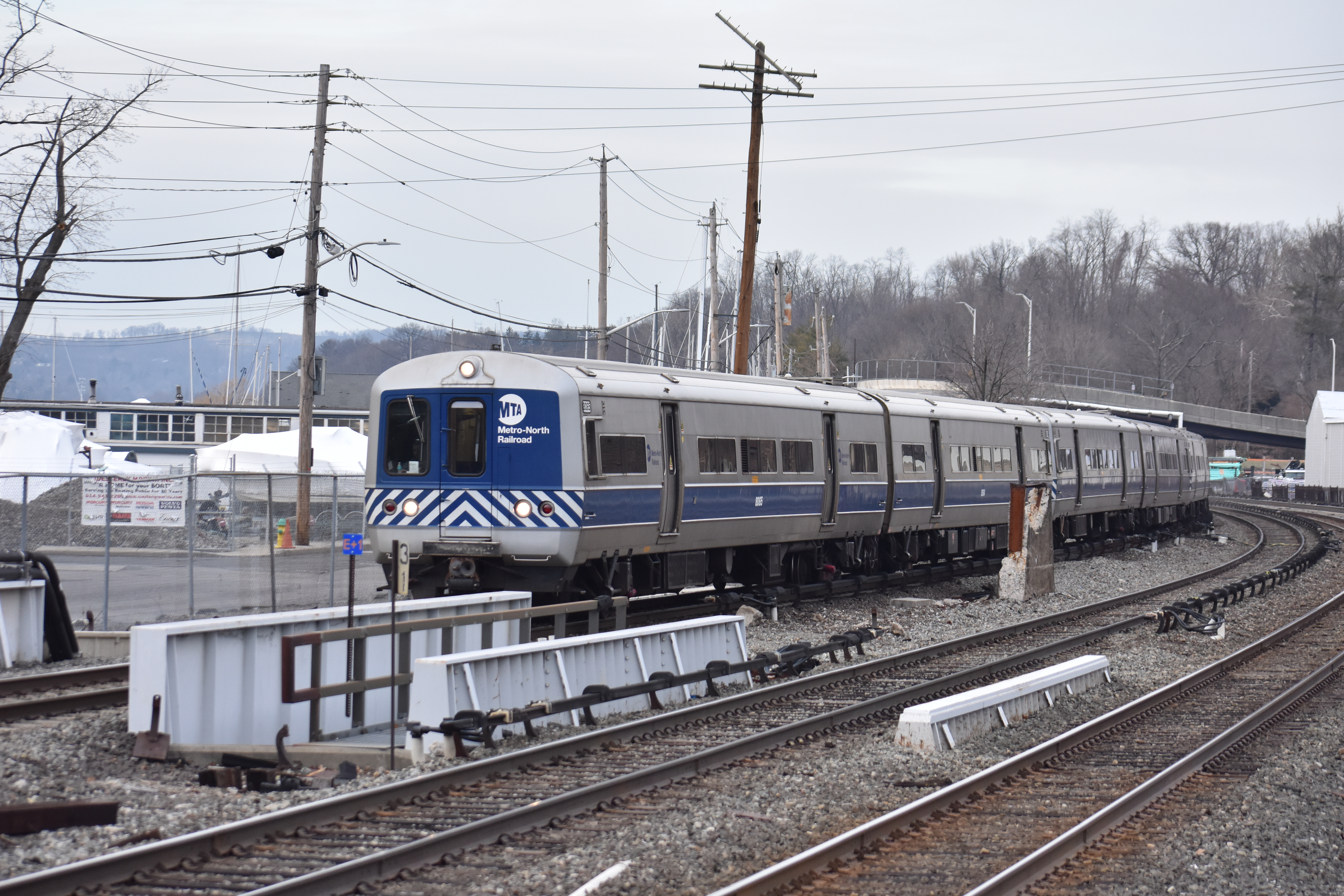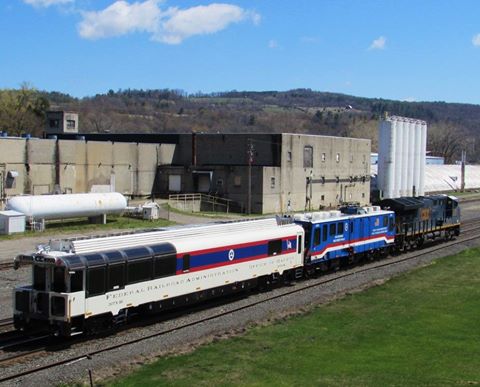|
ACMU
The ACMUs (short for Air Conditioned Multiple Unit) were a series of electric multiple unit railcars built for the New York Central railroad in three orders between 1950 and 1965. The ACMUs were intended to replace/supplement the original fleet of heavyweight MU cars, some of which dated to the start of electric operations on the New York Central. These were the first New York Central units to offer air conditioning, with sealed windows replacing the drop sash and clerestory types found on earlier cars. The initial set of 100 cars was retired in 1970, upon completion of the M1 railcar delivery, while the second and third orders, totaling 87 cars, remained in service until 2004, when they were replaced by the new M7 fleet. An order of near-identical cars was built for the Long Island Rail Road as the class MP75 in 1963. The LIRR cars were eventually converted to non-powered push-pull coaches before being retired in the late 1990s. History The ACMU fleet was intended to ... [...More Info...] [...Related Items...] OR: [Wikipedia] [Google] [Baidu] |
New York Central MU Cars
The New York Central MU Cars were a series of Electric Multiple Units built for the New York Central Railroad in 1906–1929 when the New York Central began electrifying its lines for both the Hudson Division and the Harlem Division. These were the first electric multiple units ever bought by the New York Central Railroad. They were retired between 1950-1973 by the ACMUs and M1A railcars. History The first cars were built in 1906–1907 by American Car and Foundry Company and St. Louis Car Company, which together delivered 182 all steel MUs to the New York Central Railroad. They were built for the electrification of the Hudson Division north of High Bridge and the electrification of the Harlem Division north of Wakefield. The cars were numbered 4000–4173 featured arched stained glass windows located above each set of windows. The glass would be covered later on making it appear that the cars had small and low windows. In 1910 and in 1913 both the Hudson and Harlem divisions ... [...More Info...] [...Related Items...] OR: [Wikipedia] [Google] [Baidu] |
Pullman Standard
The Pullman Company, founded by George Pullman, was a manufacturer of railroad cars in the mid-to-late 19th century through the first half of the 20th century, during the boom of railroads in the United States. Through rapid late-19th century development of mass production and takeover of rivals, the company developed a virtual monopoly on production and ownership of sleeper cars. During a severe economic downturn, the 1894 Pullman Strike by company workers proved a transforming moment in American labor history. At the company's peak in the early 20th century, its cars accommodated 26 million people a year, and it in effect operated "the largest hotel in the world". Its production workers initially lived in a planned worker community (or "company town") named Pullman, Chicago. Pullman developed the sleeping car, which carried his name into the 1980s. Pullman did not just manufacture the cars, it also operated them on most of the railroads in the United States, paying rail ... [...More Info...] [...Related Items...] OR: [Wikipedia] [Google] [Baidu] |
M1/M3 (railcar)
The M1 and M3 are two similar series of electric multiple unit rail cars built by the Budd Company for the Long Island Rail Road, the Metro-North Railroad and Metro-North's predecessors, Penn Central and Conrail.Cudahy, p. 264 Originally branded by Budd as Metropolitans, the cars are more popularly known under their model names, M1 (late 1960s/early 1970s cars) and M3 (mid 1980s cars). The Metro North cars were branded under the M1A and M3A series. Overview Even though the LIRR's fleet of some 900 MP54 electric MU cars constructed between 1908 and 1930 had been augmented between 1955-1963 by about 150 newer MP72 and MP75 EMUs, the roster still contained a large number of increasingly elderly prewar cars which the cash strapped LIRR was unable to replace. In 1965 the nearly bankrupt commuter railroad was taken over by the state owned Metropolitan Commuter Transportation Authority, later renamed the Metropolitan Transportation Authority in 1968, which was then able to pro ... [...More Info...] [...Related Items...] OR: [Wikipedia] [Google] [Baidu] |
Ditch Lights
Trains include a variety of types of lights, for safety, illumination, and communicating train status. The most universal type of light is the headlight, which is included on the front of locomotives, and frequently on the rear as well. Other types of lights include classification lights, which indicate train direction and status, and ditch lights, which are a pair of lights positioned towards the bottom of a train to illuminate the tracks. History The earliest trains did not run at night, but the need for running trains at night soon became apparent. In the United States, early records of headlight usage date back to 1832: that year, Horatio Allen devised the first known locomotive headlight - though his "headlight" consisted of a burning pile of wood on a flatcar, followed by a giant reflector on a second flatcar, pushed by a locomotive. While this method of illumination was impractical, other experimentation continued. One early method was to hang a number of lanterns off the ... [...More Info...] [...Related Items...] OR: [Wikipedia] [Google] [Baidu] |
Brewster North
Southeast station (formerly known as Brewster North station) is a commuter rail stop on the Metro-North Railroad's Harlem Line, located in Southeast, New York. It is the terminus of the Harlem Line electrified service, and with the exception of rush hour service and a roundtrip on weekends, passengers heading to stations further north to Wassaic have to transfer here to diesel powered service. History The current terminal complex opened in 1980 as a delayed replacement for the Dykeman's station, closed over a decade earlier, and took its current name in October 2003. Station layout The station has one eight-car-long high-level island platform serving trains in both directions. North of the station, the two tracks merge and electrification ends. Just south of the station is Metro-North's Southeast Diesel Maintenance Facility. The extensive parking at the station is fed by a wide, access road known as Independent Way that connects to NY 312 right next to its interchange with ... [...More Info...] [...Related Items...] OR: [Wikipedia] [Google] [Baidu] |
Federal Railroad Administration
The Federal Railroad Administration (FRA) is an agency in the United States Department of Transportation (DOT). The agency was created by the Department of Transportation Act of 1966. The purpose of the FRA is to promulgate and enforce rail safety regulations, administer railroad assistance programs, conduct research and development in support of improved railroad safety and national rail transportation policy, provide for the rehabilitation of Northeast Corridor rail passenger service, and consolidate government support of rail transportation activities. The FRA is one of ten agencies within DOT concerned with intermodal transportation. It operates through seven divisions under the offices of the Administrator and Deputy Administrator. These divisions are: Financial Management and Administration, Chief Counsel, Civil Rights, Public Affairs, Public Engagement, Railroad Policy and Development, and Safety. It has a staff of about 850. Function All passenger and freight rail ... [...More Info...] [...Related Items...] OR: [Wikipedia] [Google] [Baidu] |
North White Plains Station
North White Plains station is a commuter rail stop on the Metro-North Railroad's Harlem Line, located in the North White Plains neighborhood of White Plains, New York. It is the north terminal for most trains that run local to the south and, until 1984, was the northern limit of electrification. Adjacent to the station is a yard/support facility for trains, one of two on the line (Southeast is the other). It is from Grand Central Terminal. Travel time varies from 37 minutes to one hour depending on if the train is express or local. The station is in the city of White Plains, and lies close to the hamlet of North White Plains in North Castle. The station is the northernmost station in the Zone 4 Metro-North fare zone. History North White Plains station was originally built in 1972 by the Penn Central Railroad as a replacement for the former New York Central Railroad-built Holland Avenue station, a low-level northbound-only side platform located near the south end of the current sta ... [...More Info...] [...Related Items...] OR: [Wikipedia] [Google] [Baidu] |
Penn Central
The Penn Central Transportation Company, commonly abbreviated to Penn Central, was an American Railroad classes, class I railroad that operated from 1968 to 1976. Penn Central combined three traditional corporate rivals (the Pennsylvania Railroad, Pennsylvania, New York Central Railroad, New York Central and the New York, New Haven and Hartford Railroad, New York, New Haven and Hartford railroads), all united by heavy service into the New York metropolitan area and (to a lesser extent) New England and Chicago. The new company failed barely two years after formation, the largest bankruptcy in U.S. history at the time. The Penn Central's railroad assets were nationalized into Conrail along with the other bankrupt northeastern roads; its real estate and insurance holdings successfully Reorganization, reorganized into American Premier Underwriters. History Pre-merger The Penn Central railroad system developed in response to challenges facing Northeast United States, northeaste ... [...More Info...] [...Related Items...] OR: [Wikipedia] [Google] [Baidu] |
North White Plains (Metro-North Station)
North White Plains station is a commuter rail stop on the Metro-North Railroad's Harlem Line, located in the North White Plains neighborhood of White Plains, New York. It is the north terminal for most trains that run local to the south and, until 1984, was the northern limit of electrification. Adjacent to the station is a yard/support facility for trains, one of two on the line (Southeast is the other). It is from Grand Central Terminal. Travel time varies from 37 minutes to one hour depending on if the train is express or local. The station is in the city of White Plains, and lies close to the hamlet of North White Plains in North Castle. The station is the northernmost station in the Zone 4 Metro-North fare zone. History North White Plains station was originally built in 1972 by the Penn Central Railroad as a replacement for the former New York Central Railroad-built Holland Avenue station, a low-level northbound-only side platform located near the south end of the current sta ... [...More Info...] [...Related Items...] OR: [Wikipedia] [Google] [Baidu] |





